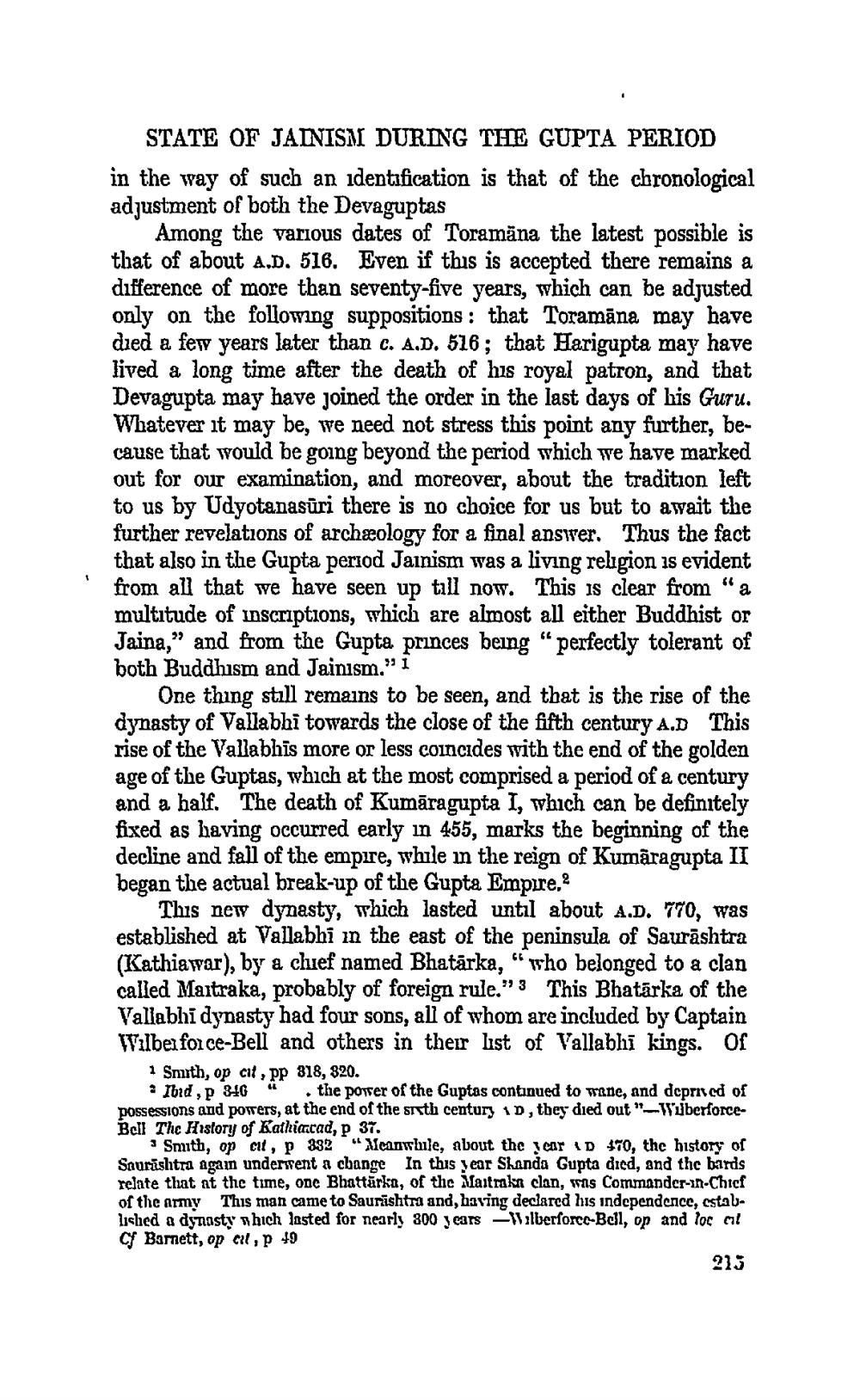________________ STATE OF JAINISM DURING THE GUPTA PERIOD in the way of such an identification is that of the chronological adjustment of both the Devaguptas Among the various dates of Toramana the latest possible is that of about A.D. 516. Even if this is accepted there remains a difference of more than seventy-five years, which can be adjusted only on the following suppositions : that Toramana may have died a few years later than c. A.D. 516; that Harigupta may have lived a long time after the death of his royal patron, and that Devagupta may have joined the order in the last days of his Guru. Whatever it may be, we need not stress this point any further, because that would be going beyond the period which we have marked out for our examination, and moreover, about the tradition left to us by Udyotanasuri there is no choice for us but to await the further revelations of archaeology for a final answer. Thus the fact that also in the Gupta period Jainism was a living religion is evident from all that we have seen up till now. This is clear from "a multitude of inscriptions, which are almost all either Buddhist or Jaina," and from the Gupta princes being perfectly tolerant of both Buddhism and Jainism." 1 One thing still remains to be seen, and that is the rise of the dynasty of Vallabhi towards the close of the fifth century A.D This rise of the Vallabhis more or less coincides with the end of the golden age of the Guptas, which at the most comprised a period of a century and a half. The death of Kumaragupta I, which can be definitely fixed as having occurred early in 455, marks the beginning of the decline and fall of the empire, while in the reign of Kumaragupta II began the actual break-up of the Gupta Empire, This new dynasty, which lasted until about A.D. 770, was established at Vallabhi in the east of the peninsula of Saurashtra (Kathiawar), by a chef named Bhatarka," who belonged to a clan called Maitraka, probably of foreign rule." 3 This Bhatarka of the Vallabhi dynasty had four sons, all of whom are included by Captain Tilbe foi ce-Bell and others in their list of Vallabhi kings. Of 1 Smuth, op cit, pp 818, 820. Iord, 340 the power of the Guptas continued to wane, and deprned of possessions and powers, at the end of the systi century 1D, they died out"-15berforceBell The Hrstory of Kathiracad, p 37. Smith, op cit, P 332 "Meanwhile, about the cor ID 470, the history of Saurashtra Agam underwent a cbange In this year Shanda Gupta died, and the bards relate that at the time, one Bhattarka, of the Maitmake clan, was Commander-in-Chief of the army Thus man came to Saurashtra and, baving declared his independence, estallished a dynasty which lasted for nearly 300 years -111berforce-Bell, op and loc al Barnett, op cul, P 49 213




